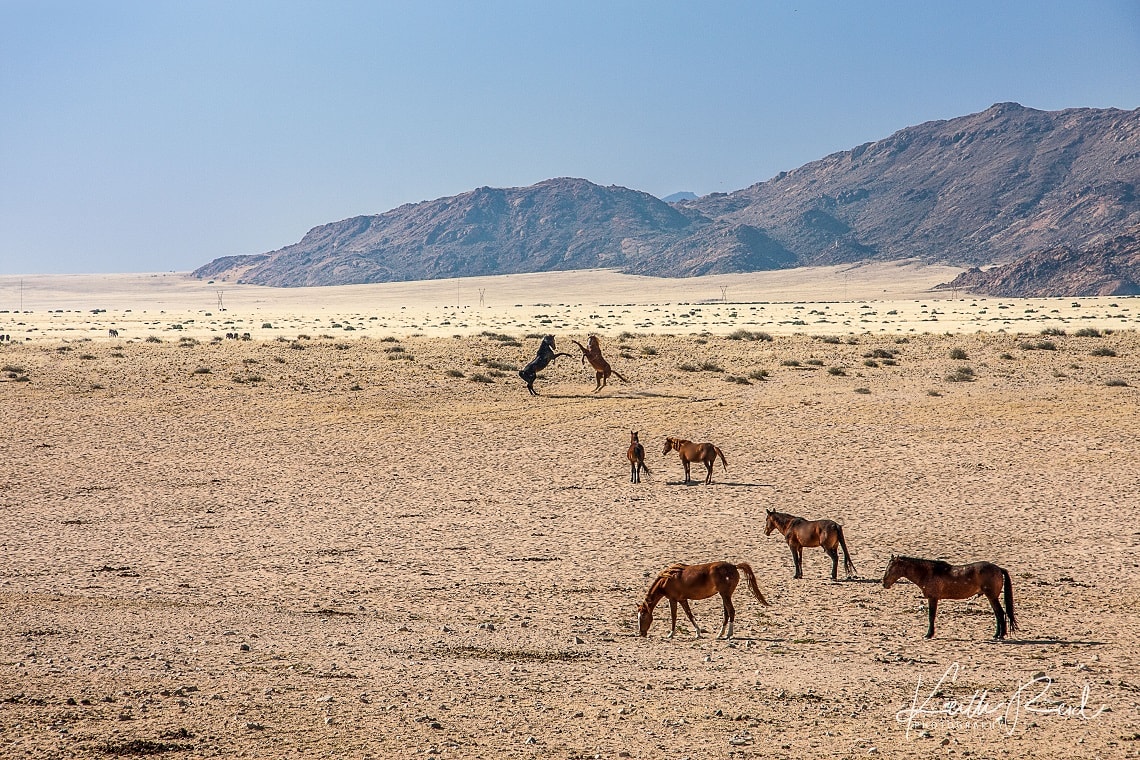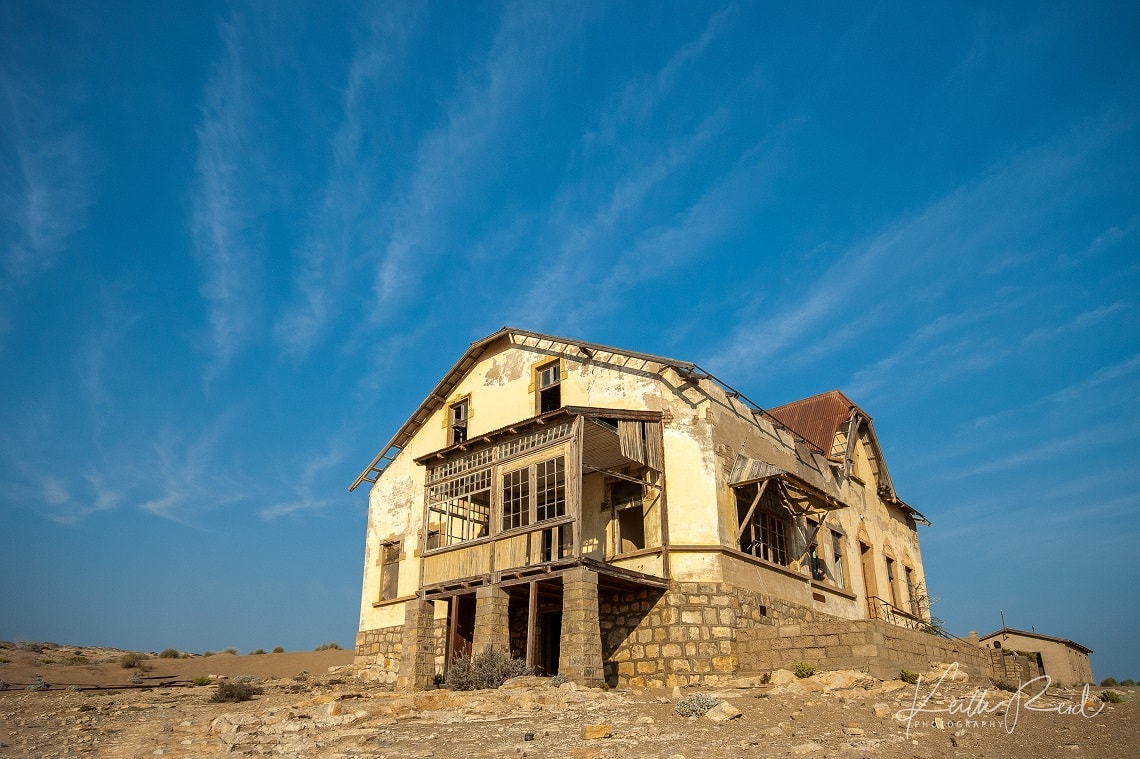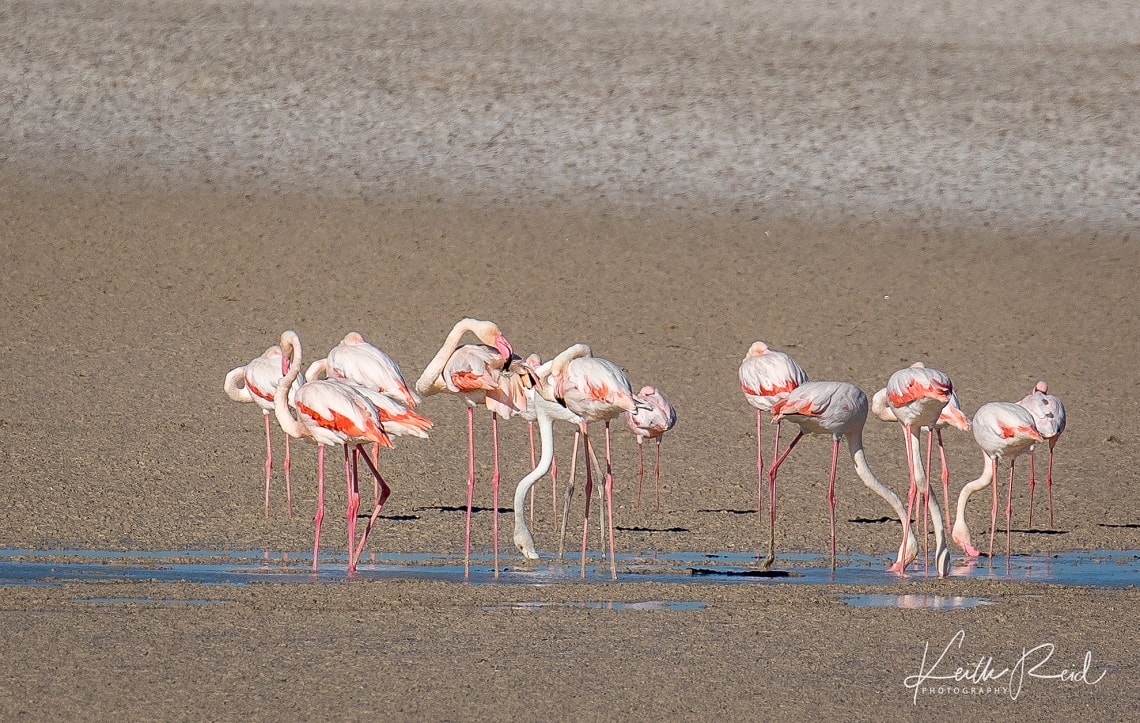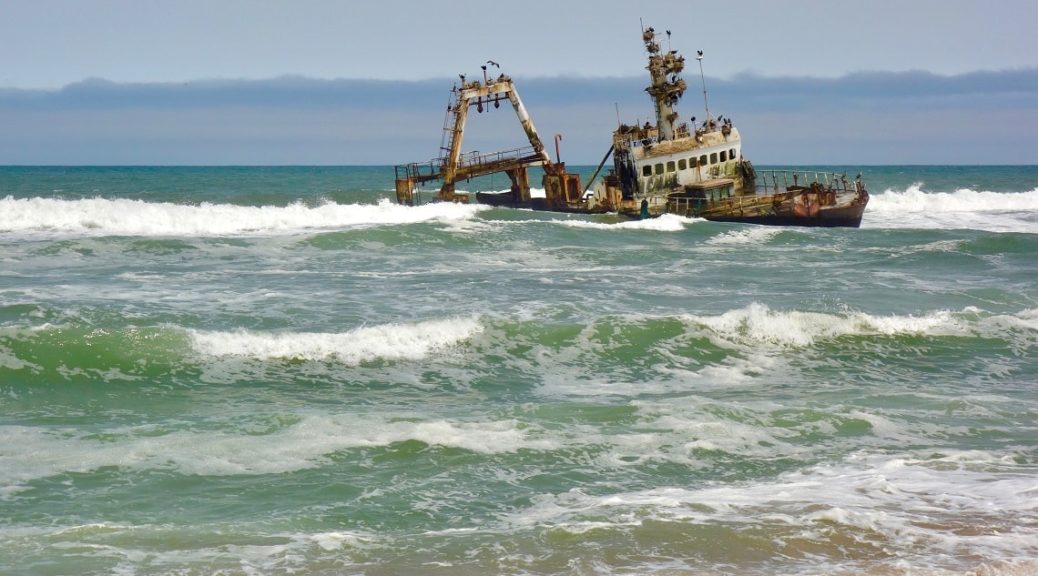Namibia’s 1,560-kilometre coastline is all part of the enormous Namib-Skeleton Coast National Park, covering 173,000 square kilometres. Coastal Namibia is wild, peppered with shipwrecks, a landscape of towering dunes and crashing seas. Here are some of the most accessible coastal attractions. By Roxanne Reid
Lüderitz
Lüderitz is a desolate little town enlivened by a few jewels of early 20th century Germanic architecture. One good reason to visit is the chance to see Namibia’s wild horses near Aus on your way there along the B4. You’re most likely to find them at the Garub waterhole 20km west of Aus. These feral horses have adapted physically and behaviourally to survive in desert conditions and can go without water for up to five days.

If you’re a keen photographer, the best reason to visit Lüderitz is a chance to explore the ghost town of Kolmanskop 10km inland. In the early 1900s diamonds were so plentiful you could grab fistfuls from the ground. Some 1,300 people lived here at its zenith, but soon the boom was over, the town abandoned, and wind and sand started to reclaim it.

Soak up the sight of Lüderitz’s old buildings and a church on a rock, visit Second Lagoon to see waders, including greater flamingo, then take the causeway to Shark Island, where you might see seals and pelicans. Despite good sea views, it has a dark history: the German military stashed prisoners here after the Nama Uprising of 1904, and 1,032 men, women and children died in just seven months.
T4A tip: Take a windbreaker and beanie to Shark Island – the wind can be icy.
Walvis Bay
Just a 20 minute drive south of Swakopmund, Walvis Bay was once a whaling station and it’s still the centre of Namibia’s fishing industry. Be enthralled by the surrounding desertscape, the wetlands and rich birdlife. This Ramsar site is the most important coastal wetland in southern Africa, where some 250,000 birds gather. It’s the place to see a pink sea of greater and lesser flamingos as they wade in the shallows in search of food. Pelicans, other water birds and waders also congregate here.

To work off some energy, enjoy kite surfing in the lagoon, go kayaking among Cape fur seals, take a 4×4 trip to Sandwich Harbour, or climb to the top of Dune 7 to marvel at the soaring dunes and the ocean beyond.
T4A tip: Best time to visit Walvis is October to April when migrant birds have arrived. Flamingos occur year-round except during good rains when they migrate to Etosha in January to May.
Swakopmund
Think beaches, fresh sea breezes, dunes, desert-adapted creatures, elegant buildings from the early 1900s and a wealth of adventure activities – that’s Swakopmund in a nutshell. Add to that good food and excellent beer and you have the makings of a memorable trip.

Explore the town on foot to admire the architecture, walk along the landmark jetty, then choose from an extensive menu of quad biking, microlighting, skydiving, sand boarding, paragliding, horse trails and hot air ballooning. A scenic flight gives you a bird’s eye view of the coastal dunes and perhaps a shipwreck. Don’t miss driving the 140km moon landscape route just outside town to see ancient welwitschias and lichen fields. Alternatively, take a tour into the dunes of Dorob National Park to learn how small creatures survive in this hot, arid zone.
T4A tip: Get a permit for the Welwitschia Plains 4WD Trail from the Ministry of Environment and Tourism office in Swakopmund.
Skeleton Coast
The Skeleton Coast is all about raw nature. Only the first 200km north of Swakopmund – the National West Coast Tourist Recreation Area – is easily accessible. This is fishing country, where villages like Henties Bay, Terrace Bay and Torra Bay are filled with salty fisher-types, though you can also go horse riding and quad biking at Henties Bay. For the rest, it’s about seeing shipwrecks – because of dense fog created when the cold water of the Benguela current slams into hot, dry desert air – and visiting the Cape Cross Seal Reserve, 120km north of Swakopmund.

Cape Cross is named after the stone cross erected in 1486 by Diogo Cão, the first European to set foot in Namibia. The colony of Cape fur seals give birth to pups in November and December. Although numbers vary according to marine conditions, there are generally around 200,000. A boardwalk lets you wander among some of them – a great spectacle, though the noise can be deafening, the smell overpowering.
T4A tip: Take a scarf or buff to cover your nose and mouth to make the smell more bearable.
Another 500km of Skeleton Coast National Park to the Angolan border is a largely untouched wilderness, except by hardcore self-sufficient 4×4 enthusiasts, two fly-in luxury camps and a flotilla of shipwrecks.
Find more about author Roxanne Reid’s travels on her Africa Addict blog.
Share your adventure
When last have you visited Namibia and what did you experience? Email your pictures and words to newsletter@tracks4africa.co.za and your adventure could be featured in Tracks4Africa’s monthly newsletter.
Shop: Latest Namibia and Botswana Self-Drive Guide Books

